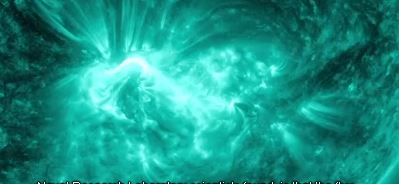

| Visitors Now: | |
| Total Visits: | |
| Total Stories: |

| Story Views | |
| Now: | |
| Last Hour: | |
| Last 24 Hours: | |
| Total: | |
NASA: First Sightings of How a CME Forms
On July 18, 2012, a fairly small explosion of light burst off the lower right limb of the sun. Such flares often come with an associated eruption of solar material, known as a coronal mass ejection or CME — but this one did not. Something interesting did happen, however. Magnetic field lines in this area of the sun’s atmosphere, the corona, began to twist and kink, generating the hottest solar material — a charged gas called plasma — to trace out the newly-formed slinky shape.
Eight hours later, on July 19, the same region flared again. This time the flux rope’s connection to the sun was severed, and the magnetic fields escaped into space, dragging billions of tons of solar material along for the ride — a classic CME.
More than just gorgeous to see, such direct observation offers one case study on how this crucial kernel at the heart of a CME forms. Such flux ropes have been seen in images of CMEs as they fly away from the sun, but it’s never been known — indeed, has been strongly debated — whether the flux rope formed before or in conjunction with a CME’s launch. This case shows a clear-cut example of the flux rope forming ahead of time.



